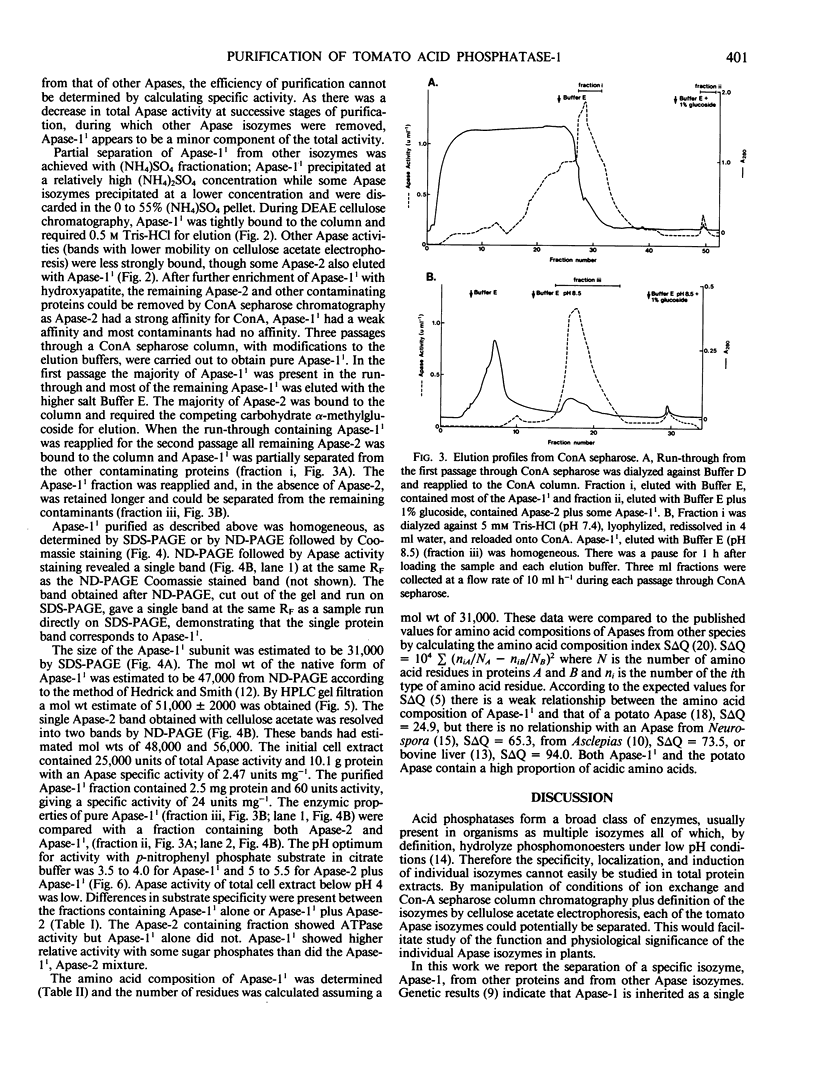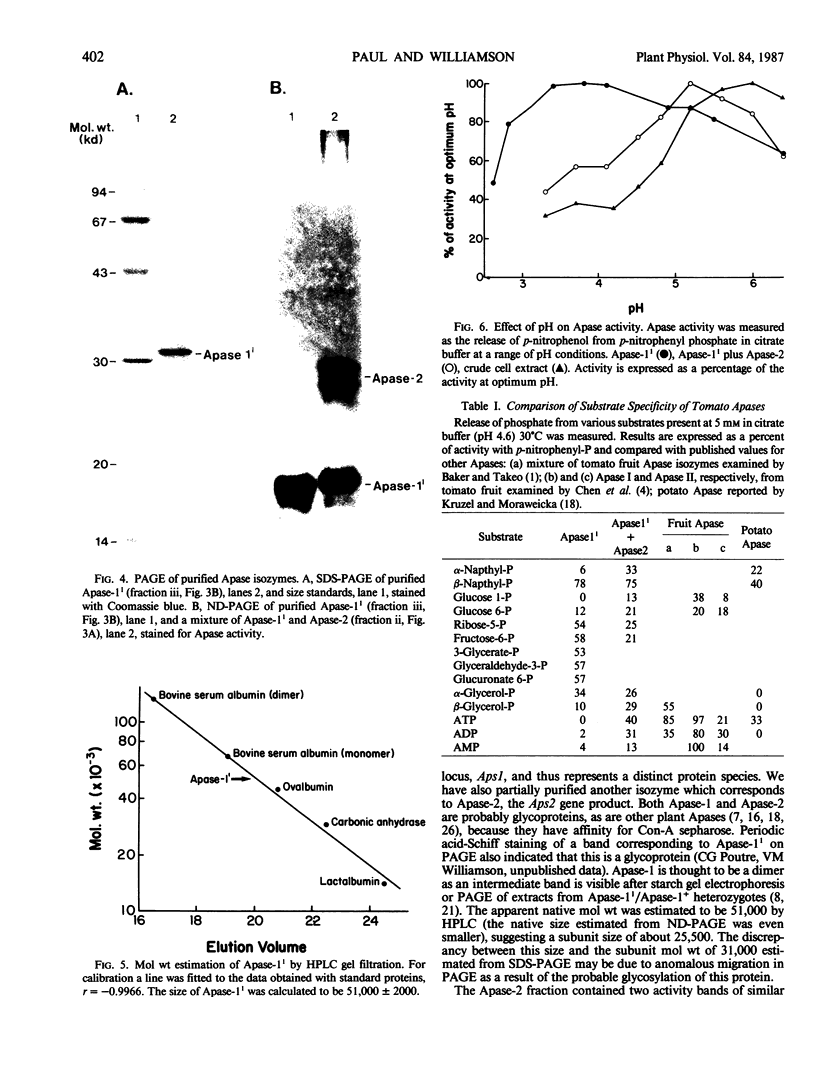Abstract
In tomato the acid phosphatase-1 isozyme (Apase-1) is inherited as a single locus linked to the nematode resistance gene (Mi). The Apase-11 electrophoretic variant has been purified from a tomato cell suspension culture using ion exchange and concanavalin A sepharose affinity chromatography. A cellulose acetate electrophoresis method was used to distinguish Apase-11 rapidly from other Apase isozymes in tomato. The subunit molecular weight of the purified enzyme was estimated to be 31,000 by sodium dodecyl sulfate-polyacrylamide gel electrophoresis. The native size of the enzyme, which is reported to be a dimer, was determined to be approximately 51,000 by high performance liquid chromatography gel filtration. Apase-11 has a lower pH optimum and a distinct substrate specificity as compared to Apases extracted from tomato fruit or from other plant species. The amino acid composition of Apase-11 is similar to that of a potato Apase.
Full text
PDF




Images in this article
Selected References
These references are in PubMed. This may not be the complete list of references from this article.
- Bradford M. M. A rapid and sensitive method for the quantitation of microgram quantities of protein utilizing the principle of protein-dye binding. Anal Biochem. 1976 May 7;72:248–254. doi: 10.1006/abio.1976.9999. [DOI] [PubMed] [Google Scholar]
- Cornish-Bowden A. Critical values for testing the significance of amino acid composition indexes. Anal Biochem. 1980 Jul 1;105(2):233–238. doi: 10.1016/0003-2697(80)90450-9. [DOI] [PubMed] [Google Scholar]
- Dupont F. M., Staraci L. C., Chou B., Thomas B. R., Williams B. G., Mudd J. B. Effect of Chilling Temperatures upon Cell Cultures of Tomato. Plant Physiol. 1985 Jan;77(1):64–68. doi: 10.1104/pp.77.1.64. [DOI] [PMC free article] [PubMed] [Google Scholar]
- Felenbok B. Acid phosphomonoesterase from Phaseolus mungo. Purification and characterization. Eur J Biochem. 1970 Nov;17(1):165–170. doi: 10.1111/j.1432-1033.1970.tb01149.x. [DOI] [PubMed] [Google Scholar]
- Fobes J. F. Trisomic analysis of isozymic loci in tomato species: segregation and dosage effects. Biochem Genet. 1980 Apr;18(3-4):401–421. doi: 10.1007/BF00484252. [DOI] [PubMed] [Google Scholar]
- Hedrick J. L., Smith A. J. Size and charge isomer separation and estimation of molecular weights of proteins by disc gel electrophoresis. Arch Biochem Biophys. 1968 Jul;126(1):155–164. doi: 10.1016/0003-9861(68)90569-9. [DOI] [PubMed] [Google Scholar]
- Heinrikson R. L. Purification and characterization of a low molecular weight acid phosphatase from bovine liver. J Biol Chem. 1969 Jan 25;244(2):299–307. [PubMed] [Google Scholar]
- Jacobs M. M., Nyc J. F., Brown D. M. Isolation and chemical properties of a repressible acid phosphatase in Neurospora crassa. J Biol Chem. 1971 Mar 10;246(5):1419–1425. [PubMed] [Google Scholar]
- Kruzel M., Morawiecka B. Acid phosphatase of potato tubers (Solanum tuberosum L). Purification, properties, sugar and amino acid composition. Acta Biochim Pol. 1982;29(3-4):321–330. [PubMed] [Google Scholar]
- Laemmli U. K. Cleavage of structural proteins during the assembly of the head of bacteriophage T4. Nature. 1970 Aug 15;227(5259):680–685. doi: 10.1038/227680a0. [DOI] [PubMed] [Google Scholar]
- Shin K. H., Nakagawa H., Tsurufuji S. Analysis of time sequence of glucocorticoid action on granulomatous inflammation. Chem Pharm Bull (Tokyo) 1975 Sep;23(9):2070–2074. doi: 10.1248/cpb.23.2070. [DOI] [PubMed] [Google Scholar]
- TAUSSKY H. H., SHORR E. A microcolorimetric method for the determination of inorganic phosphorus. J Biol Chem. 1953 Jun;202(2):675–685. [PubMed] [Google Scholar]





